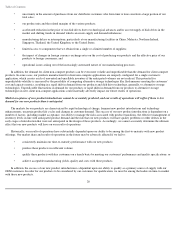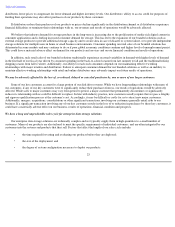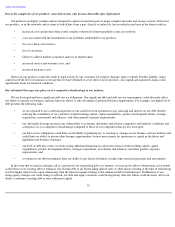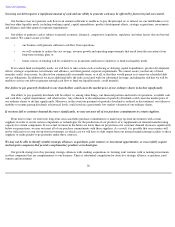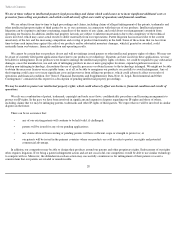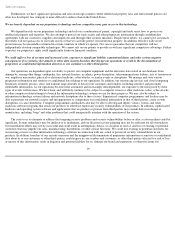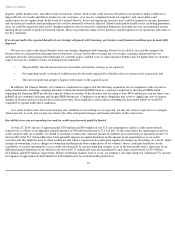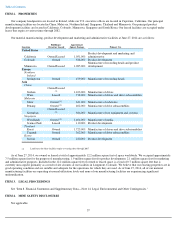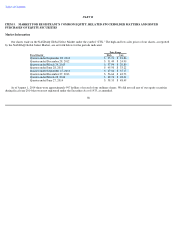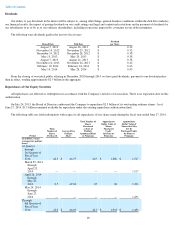Seagate 2013 Annual Report Download - page 33
Download and view the complete annual report
Please find page 33 of the 2013 Seagate annual report below. You can navigate through the pages in the report by either clicking on the pages listed below, or by using the keyword search tool below to find specific information within the annual report.
Table of Contents
business. In addition, we rely in certain limited capacities on third-party data management providers whose possible security problems and
security vulnerabilities may have similar effects on us.
We are subject to laws, rules, and regulations in the U.S. and other countries relating to the collection, use, and security of user data. In
many cases, these laws apply not only to third-
party transactions, but also to transfers of information between us and our subsidiaries, and among
us, our subsidiaries and other parties with which we have commercial relations. Our ability to execute transactions and to possess and use
personal information and data in conducting our business subjects us to legislative and regulatory burdens that may require us to notify vendors,
customers or employees of a data security breach. We have incurred, and will continue to incur, significant expenses to comply with mandatory
privacy and security standards and protocols imposed by law, regulation, industry standards, or contractual obligations. These laws, protocols
and standards continue to develop and may be inconsistent from jurisdiction to jurisdiction. Complying with emerging and changing
international requirements may cause us to incur substantial costs or require us to change our business practices. If we fail to comply with
applicable federal, state or international privacy-related or data protection laws we may be subject to proceedings by governmental entities and
incur penalties or significant legal liability.
Our international operations subject us to risks related to disruptions in foreign markets, currency exchange fluctuations, longer payment
cycles, seasonality, limitations imposed by a variety of legal and regulatory regimes, potential adverse tax consequences, increased costs, our
customers' credit and access to capital, health-related risks, and access to personnel.
We have significant operations in foreign countries, including manufacturing facilities, sales personnel and customer support operations.
We have manufacturing facilities in China, Malaysia, Northern Ireland, Singapore and Thailand, in addition to those in the United States. A
substantial portion of our client compute disk drive assembly occurs in our facility in China.
Our international operations are subject to economic risks inherent in doing business in foreign countries, including the following:
• Disruptions in Foreign Markets. Disruptions in financial markets and the deterioration of the underlying economic conditions in
the past in some countries, including those in Asia, have had an impact on our sales to customers located in, or whose end-user
customers are located in, these countries.
• Fluctuations in Currency Exchange Rates. Prices for our products are denominated predominately in U.S. dollars, even when
sold to customers that are located outside the United States. Currency instability in Asia and other geographic markets may make
our products more expensive than products sold by other manufacturers that are priced in the local currency. Moreover, many of
the costs associated with our operations located outside the United States are denominated in local currencies. As a consequence,
the increased strength of local currencies against the U.S. dollar in countries where we have foreign operations would result in
higher effective operating costs and, potentially, reduced earnings. From time to time, fluctuations in foreign exchange rates have
negatively affected our operations and profitability and there can be no assurance that these fluctuations will not adversely affect
our operations and profitability in the future. We may attempt to manage the impact of foreign currency exchange rate changes
by, among other things, entering into foreign currency forward exchange contracts. However, these contracts may not cover our
full exposure and subject us to certain counterparty credit risks. See "Item 7A.Quantitative and Qualitative Disclosures About
Market Risk-
Foreign Currency Exchange Risk" of this report for additional information about our foreign currency exchange risk.
• Longer Payment Cycles. Our customers outside of the United States are often allowed longer time periods for payment than our
U.S. customers. This increases the risk of nonpayment due to the
30


